Few observers doubt that Teach For America (TFA) has high aspirations. Established in 1990, TFA strives to close persistent racial and socioeconomic achievement gaps in U.S. public education by recruiting high-achieving college graduates to teach for two years in low-income urban and rural schools. In recent years, applications to TFA have soared, especially at highly selective colleges. In 2009-10, for example, 18 percent of Harvard University’s seniors applied to the program. Proposing to expand its teaching corps from 7,300 to 13,000 over the next five years, TFA recently won $50 million in the federal i3 (Investing in Innovation) competition and succeeded in raising $10 million in matching funds.
TFA’s rapid growth and success in garnering financial support from public and private sources exhilarates some — and angers others. Proponents vigorously cite the program’s merits, contending that TFA attracts academically strong and motivated young people who would otherwise not consider teaching, especially in high-poverty schools. Its detractors, with equal passion, argue that by requiring only a two-year commitment from corps members who have received only five weeks of formal preparation, TFA undermines efforts to stabilize and improve staffing in the very schools most overwhelmed by teacher turnover and most in need of consistency in the classroom.
Moreover, critics argue that TFA compromises teaching as a profession by minimizing the importance of preservice preparation and casting teaching as a prelude to the higher-status careers that many corps members enter after their TFA experience. Some cynically assert that the program functions primarily as a résumé booster for ambitious upper-middle-class college graduates, intent on fashioning the most compelling application to the nation’s top law or medical schools.
Debates about whether TFA can revive chronically failing schools or will further aggravate the problems facing these schools often turn on competing claims about how long TFA teachers stay on the job. Critics conclude that corps members routinely leave their school after their two-year commitment, if not before. For their part, TFA relies on internal surveys, which show that 60percent of corps members remain in education, holding various roles at various levels of the system.
Until now, however, solid information about how long TFA teachers actually remain in teaching and in their low-income schools has not been available to policy makers and school officials. Our large-scale, nationwide analysis of TFA teacher turnover presents a more detailed picture of which TFAers stay, which ones leave the profession and some suggestions about why they leave. In our study, we learned:
- Nearly two-thirds (60.5 percent) of TFA teachers continue as public school teachers beyond their two-year commitment.
- More than half (56.4 percent) leave their initial placements in low-income schools after two years, but 43.6 percent stay longer.
- By their fifth year, 14.8 percent continue to teach in the same low-income schools to which they were originally assigned.
Our findings suggest two explanations for how long TFA teachers stay in the profession and in their placement schools. The first involves their initial intentions and their background in education before entering TFA; the second is the working conditions in their schools.
WHY RETENTION MATTERS
Teacher retention, particularly in low-income schools such as those where TFA teachers are placed, is critically important. Attrition, already high among new teachers across the nation (Ingersoll, 2002), has its greatest impact in low-income, high-minority schools. In the most recent data available, 21 percent of teachers at high-poverty schools leave their schools annually, compared to 14 percent of their counterparts in low-poverty settings (Planty et al., 2008).
As teachers transfer within districts, they typically leave schools that enroll lower-income students and enter schools with higher-income students (Hanushek, Kain, & Rivkin, 2004).This revolving-door effect (Ingersoll, 2004) leaves the very schools that most need stability and continuity perpetually searching for new teachers to replace those who leave. When teachers leave their schools after only a few years, those schools incur substantial costs. Most importantly, students are likely to suffer. Novices typically fill vacancies. As a result, students are taught by a stream of first-year teachers who are, on average, less effective than their more experienced counterparts (Murnane & Phillips, 1981; Rockoff, 2004).
When effective teachers leave, schools also lose their investment in formal and informal professional development (National Commission on Teaching and America’s Future, 2003). Moreover, routinely high levels of teacher turnover impede a school’s efforts to coordinate curriculum, to track and share important information about students as they move from grade to grade, and to maintain productive relationships with parents and the local community. Quite simply, they cannot build instructional capacity. Given such high stakes, knowing more about TFA teachers’ careers in low-income schools and in the profession more broadly is essential.
WHETHER, WHEN, AND WHY
In 2007, we set out to understand whether, when, and why TFA teachers left the teaching profession and/or their low-income placement schools. We surveyed all members of three cohorts (entering in 2000, 2001, and 2002) from all TFA sites across the country and asked them to provide information about their work lives in the four to six years since they began teaching. They reported whether and when they left public teaching and/or their initial school and they explained why.
Sixty-two percent of the total population completed the survey for a final sample of 2,029 individuals. We used a statistical approach, called “discrete-time survival analysis,” to estimate teachers’ unbiased probability of leaving their schools or the profession in a given year. We were able to focus on the choices that the teachers made — to stay at their school, change schools, or leave teaching — because we could identify and set aside career changes due to involuntary transfers, layoffs, and dismissals.
HOW LONG ARE TFA TEACHERS’ CAREERS?
We expected to find that a large proportion of TFA teachers in our sample would have left teaching after completing their two-year obligation to TFA. But, we found that 60.5 percent of teachers taught in K-12 schools longer than two years and more than one third (35.5 percent) taught for more than four years. After five years, 27.8 percent were still in teaching. This retention rate is markedly lower than the 50 percent estimated for new teachers across all types of schools (Smith & Ingersoll, 2003). Good data are not currently available that would allow us to compare TFA teachers’ turnover to teachers’ turnover in similar high-poverty schools, although reports from Philadelphia suggest that the rates may be roughly comparable (Neild, Useem, Travers, & Lesnick, 2003).
Most people would be surprised to learn that a substantial percentage of TFA teachers — 43.6 percent — remained in their initial, low-income placement school beyond their two-year obligation. However, many individuals who stayed in teaching did leave their original placement schools at some point. About half of those who remained in teaching after their third year had changed schools. And, after the fourth year, only 14.8 percent continued to teach in their original school. This level of turnover is very problematic from the perspective of low-income schools and their students.
HOW DID TFA TEACHERS’ ORIGINAL PLANS AND EDUCATION INFLUENCE THEIR RETENTION?
When we examined the survey responses, we found two explanations for these teachers’ career choices. The first emerged from self-reports about their original plans when they applied to TFA as well as evidence about their prior educational preparation.
Although most people think TFA corps members are much alike, we found two distinct subgroups in this sample of over 2,000 teachers. Those in one subgroup had short-term expectations for a teaching career from the start, thus fitting the “two-years-and-out” picture that most people have in mind when they think of TFA. Teachers in the other subgroup had more traditional, longer-term expectations for a teaching career.
The majority (56.59 percent) of those in the sample indicated that, when they applied to TFA, they had planned to teach for two years or less. Such intentions were especially apparent for nearly one-tenth (9.28 percent) of the sample who had applied to graduate school in another field and then deferred their enrollment for two years while teaching in TFA. Controlling for demographic and placement variables, in years 1-3, those who had deferred graduate school before enrolling in TFA were significantly and substantially more likely to leave teaching than those who had not deferred graduate school.
In contrast, nearly half (43.41 percent) of the sample said that, from the beginning, they had expected to teach longer than TFA’s requirement. Notably, 11.34 percent reported that they had intended to make teaching a lifelong career when they entered TFA. Some (3.34 percent) had already completed a traditional teacher preparation program; others (5.28 percent) had majored or minored in education; and an additional 5.82 percent of the sample had taken pedagogical classes as undergraduates. Thus, almost 12 percent of the sample had some training in teaching, whether a major or minor in education, completion of a teacher preparation program, or completion of a teaching methods class, before enrolling in TFA. Moreover, 6.94 percent of the sample had applied to another teaching job in addition to TFA. These actions signal a deeper commitment to teaching that preceded their TFA experience.
In fact, those who displayed an early commitment to teaching did stay in the classroom longer than other TFA peers. For example, 71.3 percent of education majors taught longer than four years, while only about half that proportion in the entire sample — 35.5 percent — taught that long. Of those with an education major or minor, 62.4 percent taught for longer than four years as did 53.0 percent of those who had applied for another teaching job, again a much higher proportion than the overall sample. These groups are small, but noteworthy because they had substantially higher retention rates than others in the sample.
It is impossible to say whether these teachers’ longer stay in the classroom was due to their initial commitment to teaching or to the success they achieved with their students as a result of the knowledge and skill they acquired through undergraduate studies in education. In an earlier study, we found that new teachers’ “sense of success” with their students figured centrally in their decisions about whether to continue teaching (Johnson & Birkeland, 2003). Given the limited induction and support that the TFA teachers probably received in their high-need schools, it seems likely that both their prior coursework and their original intentions played a role in their career decisions.
These findings show that Teach For America teachers are far from being exclusively short-term in their intentions or actions. Some appear to use the program as a path to an extended career in teaching. They may choose TFA as a way to bypass longer preparation programs, licensing requirements, or the bureaucratic obstacles associated with landing a teaching job, especially in a large, urban district. They also may have wanted the status and camaraderie that come with becoming TFA corps members. Whatever their reasons, it seems clear that a considerable proportion of those in the sample expected to make a longer-term commitment to teaching from the start.
WHY DID TFA TEACHERS LEAVE TEACHING OR TRANSFER TO OTHER SCHOOLS?
Our survey also provided insight into why some TFA corps members decided to leave teaching. When asked to select the most influential factor in their decision to leave teaching, the top reasons selected were:
- To pursue a position other than K-12 teacher (34.93 percent);
- To take courses to improve career opportunities in education (11.79 percent); or
- To take courses to improve career opportunities outside of education (10.26 percent).
These top three reasons relate to the teachers’ interest in professional advancement, either outside or inside education. However, the fourth reason, cited by nearly one-tenth of the teachers (9.83 percent), was poor administrative leadership at their school. In addition, some attributed their decision to other deficiencies in their working conditions — lack of collaboration (2.11 percent), inadequate discipline (2.98 percent), or general dissatisfaction with their job description and responsibilities (2.84 percent). Therefore, nearly 18 percent of those who left teaching cited such school-based factors as the primary reason for their departure.
Beyond teachers’ self-reports about working conditions, our analysis revealed that their teaching assignments affected retention. Those who were assigned to teach more challenging assignments — split grades, multiple subjects, or out-of-field courses, for which they were not prepared — were more likely to resign from teaching or leave their jobs than those with single-grade, single-subject, or in-field assignments (Donaldson & Johnson, 2010). For example, 76.2 percent of math teachers with a math major taught more than two years, compared with 60.0 percent of math teachers without a math major. Fifty percent of math teachers without a major in math left teaching within 2.51 years, while half of those with a math major left within 4.08 years.
Those with short-term intentions not only chose to leave teaching in favor of other professional opportunities, but also because they found their working conditions to be subpar. By contrast, when individuals with long-term intentions left teaching, they tended to leave, not because they preferred a different profession or were dissatisfied with their work, but because of a major life change, such as pregnancy or child-rearing.
Notably, not all of those who left teaching within six years permanently abandoned the field of education. When we asked respondents who had left what they were doing now, we learned that 21.0 percent held positions in K-12 schools and 10.7 percent had returned to the classroom as teachers. Contrary to popular expectations, only 3.7 percent were lawyers and 1.6 percent were medical professionals. We found that teachers who reported or provided evidence of longer-term intentions — for example, by having taken courses in education — remained in teaching and in their original school in much higher proportions than those with short-term intentions. We asked teachers who stayed in teaching, but had left their original placement school, why they had made the change. Six percent had been reassigned through an involuntary transfer. Among others who chose to transfer, the reason most often cited was a change in residence (29 percent). However, more than one-third reported transferring because they were dissatisfied with their original school — poor administrative leadership (16 percent), lack of philosophical alignment (14 percent), lack of discipline (3 percent), or dissatisfaction with job responsibilities (2 percent). For those who remained in teaching, working conditions were central in deciding to leave their original placement.
CONCLUSION
This study provides much-needed information about the careers of TFA teachers. The good news is that nearly two-thirds stay in teaching beyond their two-year commitment. However, less than a quarter stay in their initial, low-income school for more than three years. Given TFA’s commitment to closing the achievement gap — a goal shared by many other fast-track preparation programs — this revolving door transfer of teachers from the schools that most need skilled, experienced teachers remains a serious problem.
We were struck by the higher retention rates among teachers who initially had longer-term plans for teaching, especially those who had taken education courses in college. This seems to suggest that new teachers benefit from having more preservice preparation than fast-track programs usually provide. We need to learn more about the type, timing, and length of preparation that new teachers find most valuable.
The TFA teachers who stayed in teaching but changed schools reported that their decisions were significantly influenced by the working conditions in their initial school — the principal’s leadership, their teaching assignment, student discipline, and the school’s philosophy. These responses suggest that if hard-to-staff schools are to succeed in serving their low-income students, it won’t be because they receive a steady stream of well-educated, committed novice teachers, but because they become places where those individuals find they can succeed and, therefore, choose to stay.
MORGAEN L. DONALDSON is an assistant professor in the Neag School of Education at the University of Connecticut. SUSAN MOORE JOHNSON is the Jerome T. Murphy Professor of Education at the Harvard Graduate School of Education.
Reproduced and distributed with permission of Phi Delta Kappa International, www.pdkintl.org. All rights reserved.

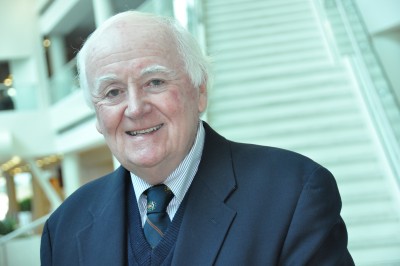 John Greene (MA ’67, Ph.D. ’70), a master’s student at UConn in the 1960s, was also teaching high school math at the time. One day he was walking down a hall on campus, where he saw the sign “Project Essay Grade” and he knocked on the door. Entering that door would change his course of study – and his life forever.
John Greene (MA ’67, Ph.D. ’70), a master’s student at UConn in the 1960s, was also teaching high school math at the time. One day he was walking down a hall on campus, where he saw the sign “Project Essay Grade” and he knocked on the door. Entering that door would change his course of study – and his life forever.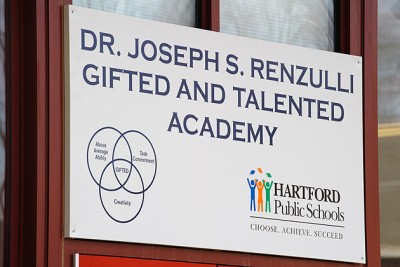 The brightly lit room was buzzing. Groups of three or four children, all fourth graders, sat or stood around small tables, trying mightily to create an electromagnetic current that would lift more and more paper clips. Their teacher, Freddie DeJesus, wandered from table to table, sitting and chatting and making suggestions to help move each group in the right direction.
The brightly lit room was buzzing. Groups of three or four children, all fourth graders, sat or stood around small tables, trying mightily to create an electromagnetic current that would lift more and more paper clips. Their teacher, Freddie DeJesus, wandered from table to table, sitting and chatting and making suggestions to help move each group in the right direction.
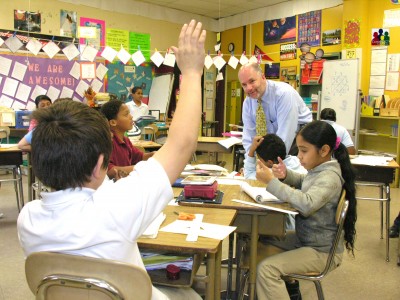 A grant supporting a college readiness program for two Bridgeport schools – Bassick High and Longfellow School—has been awarded by the Lloyd G. Balfour Foundation, Bank of America, N.A., Trustee to the University of Connecticut for an initiative to be run by the
A grant supporting a college readiness program for two Bridgeport schools – Bassick High and Longfellow School—has been awarded by the Lloyd G. Balfour Foundation, Bank of America, N.A., Trustee to the University of Connecticut for an initiative to be run by the 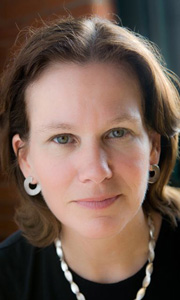 The Neag School welcomes Neag alumnus Dr. Carol Ewing Garber for a presentation on “The Expressway to Health: Essentials of Exercise for (Almost) Everybody and Every Schedule” on Thursday, Feb. 9 from 4-5 pm. at the UConn, Storrs Campus. The presentation, hosted by the Neag School’s Department of Kinesiology, is free and open to the public and will be held at the Center for Undergraduate Education (CUE), room 122.
The Neag School welcomes Neag alumnus Dr. Carol Ewing Garber for a presentation on “The Expressway to Health: Essentials of Exercise for (Almost) Everybody and Every Schedule” on Thursday, Feb. 9 from 4-5 pm. at the UConn, Storrs Campus. The presentation, hosted by the Neag School’s Department of Kinesiology, is free and open to the public and will be held at the Center for Undergraduate Education (CUE), room 122. Accolades – below are news and notes from our alumni, faculty, staff, and students. We are proud of all the amazing accomplishments by our Neag family. If you have an accolade to share, we want to hear from you! Please send any news items (and story ideas) to
Accolades – below are news and notes from our alumni, faculty, staff, and students. We are proud of all the amazing accomplishments by our Neag family. If you have an accolade to share, we want to hear from you! Please send any news items (and story ideas) to 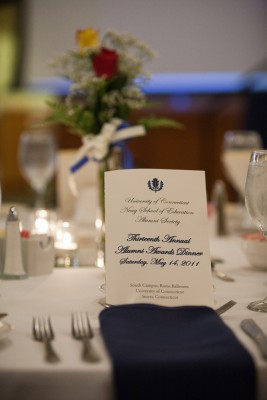 Dear Alumni and Friends of the Neag School of Education:
Dear Alumni and Friends of the Neag School of Education: